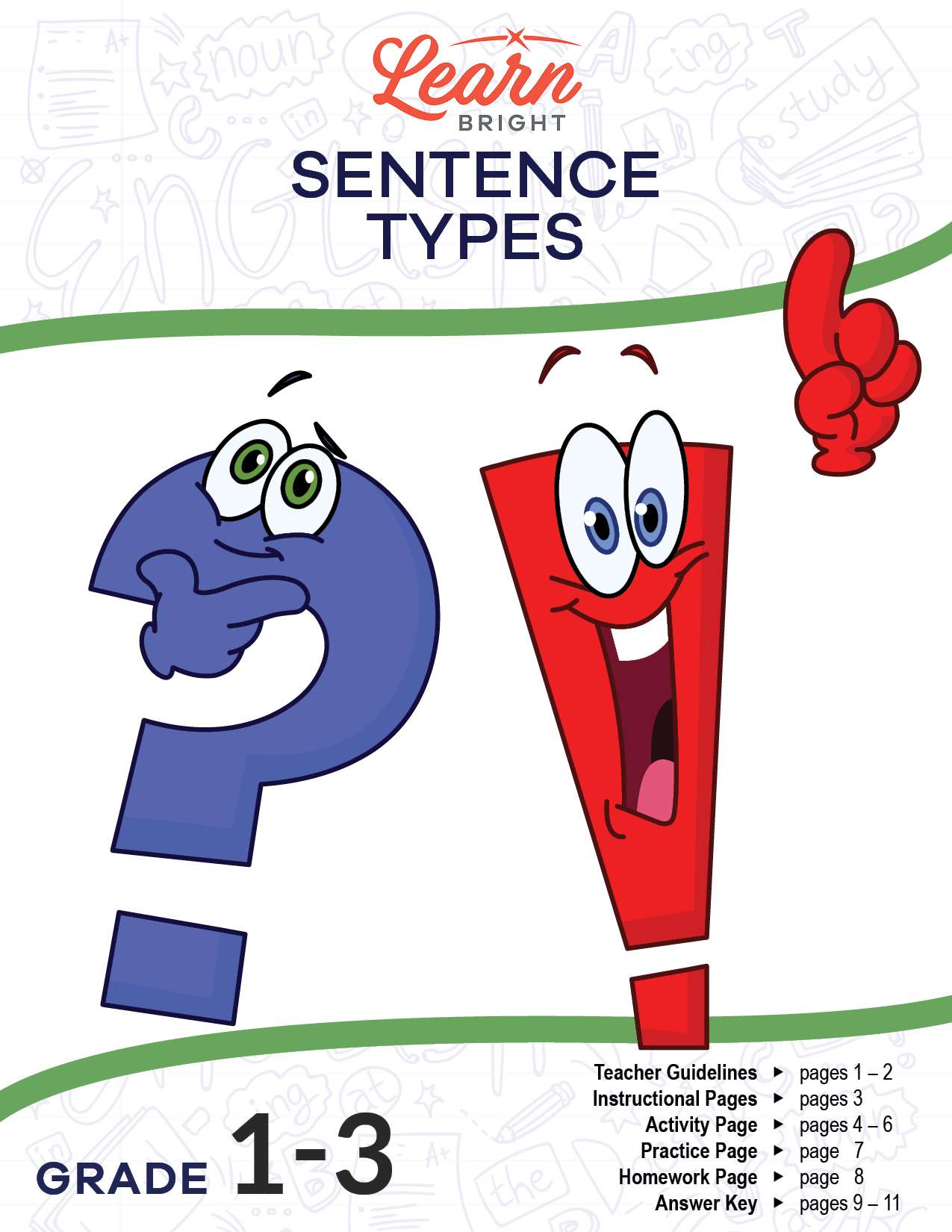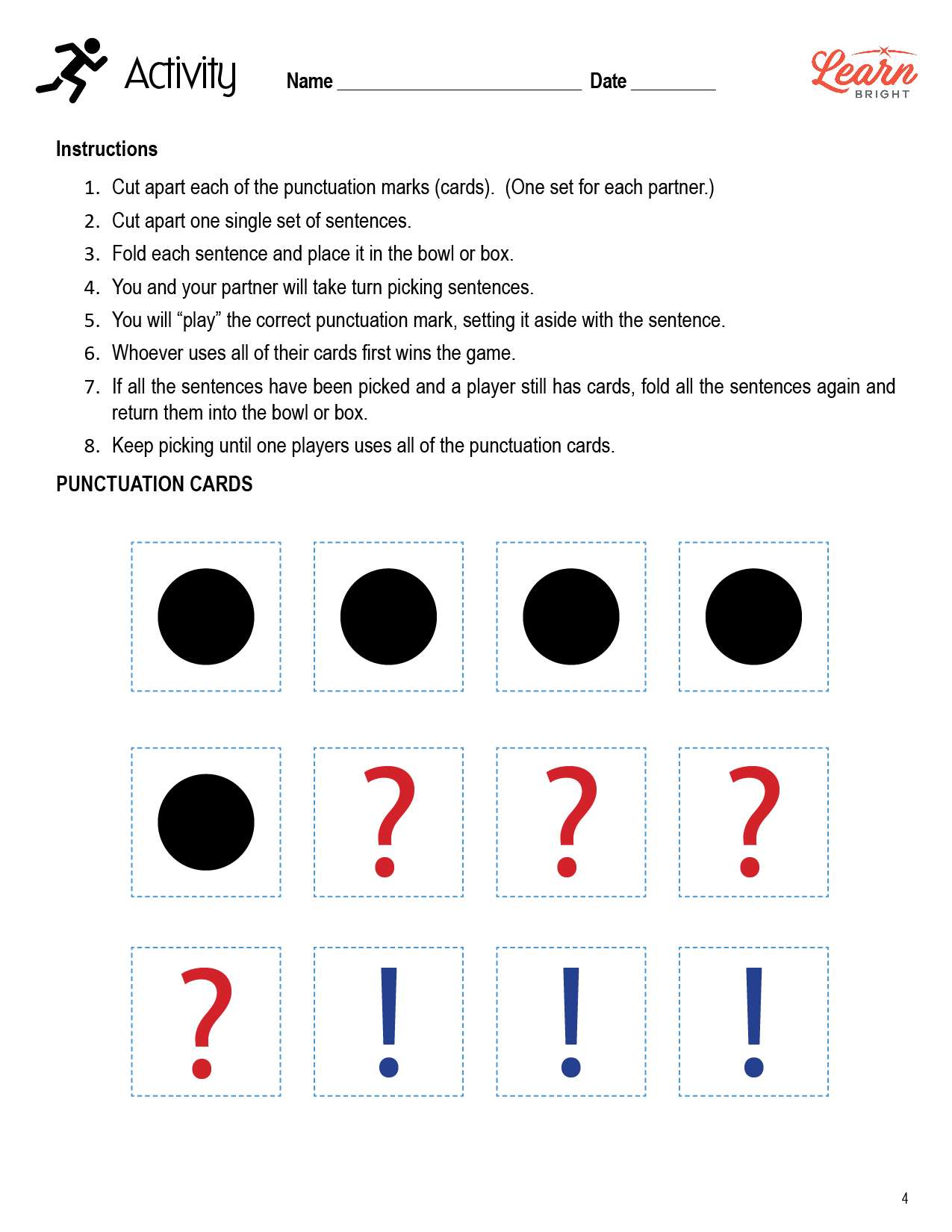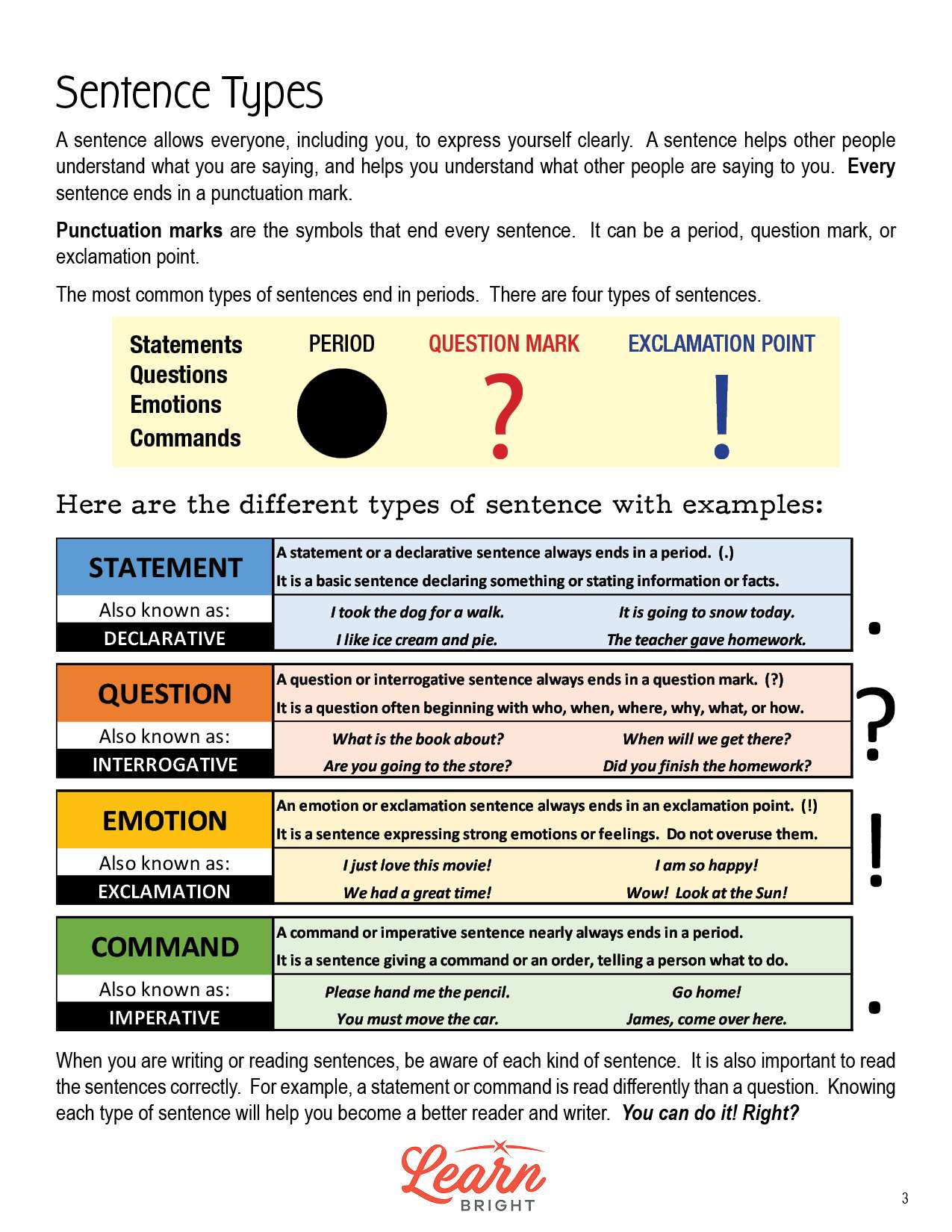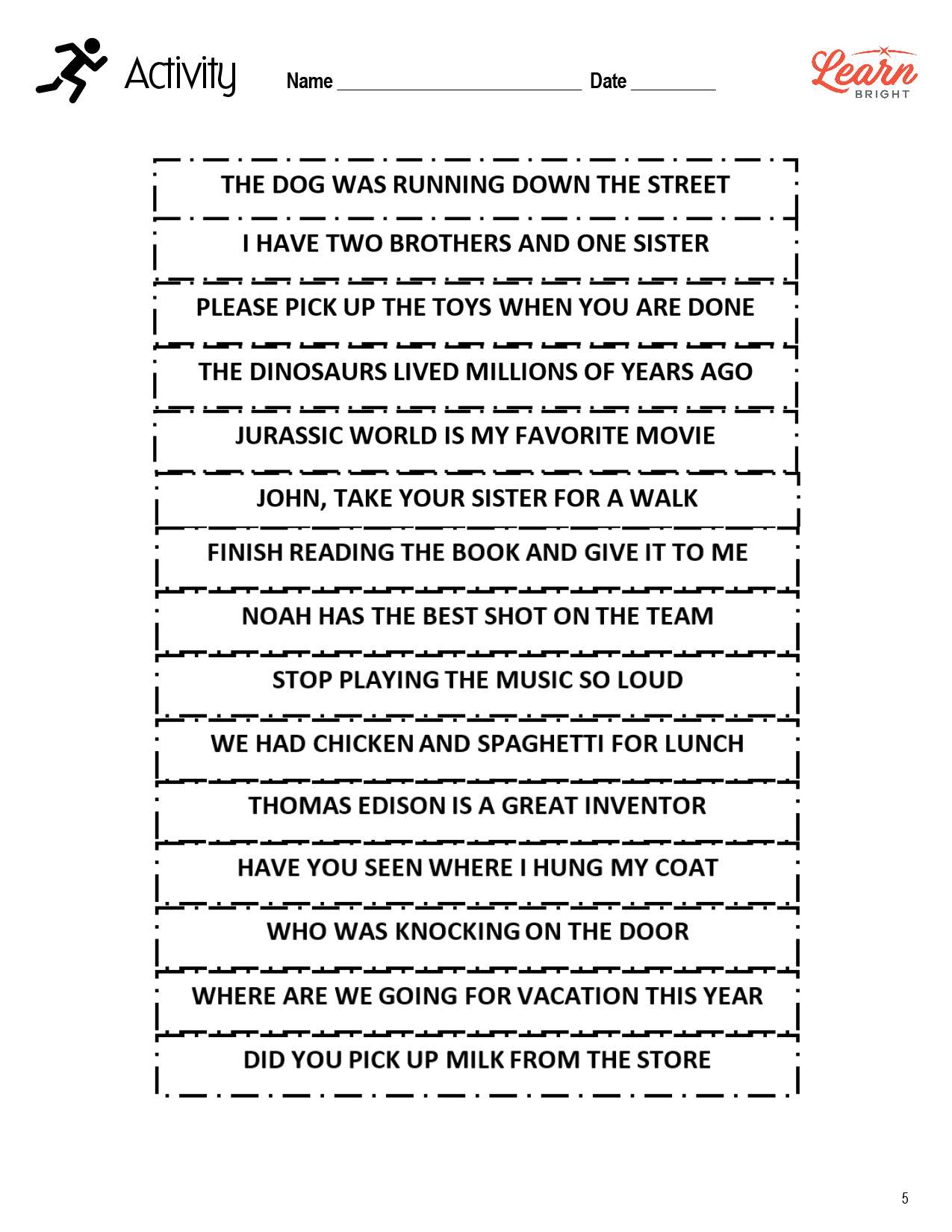Description
What our Sentence Types lesson plan includes
Lesson Objectives and Overview: Sentence Types prepares young students to identify and use the four types of sentences: declarative (statement), imperative (command), exclamatory (emotion), interrogative (question). With interactive activities, students have ample practice to distinguish the sentence types and solidify understanding. This lesson is for students in
Classroom Procedure
Every lesson plan provides you with a classroom procedure page that outlines a step-by-step guide to follow. You do not have to follow the guide exactly. The guide helps you organize the lesson and details when to hand out worksheets. It also lists information in the orange box that you might find useful. You will find the lesson objectives, state standards, and number of class sessions the lesson should take to complete in this area. In addition, it describes the supplies you will need as well as what and how you need to prepare beforehand. The supplies you will need include scissors, bowls or boxes for the activity worksheet, and the handouts. To prepare for this lesson ahead of time, you can create a large period, question mark, and exclamation mark for use and display throughout the lesson. You can also gather the supplies and copy the handouts.
Options for Lesson
Included with this lesson is an “Options for Lesson” section that lists a number of suggestions for activities to add to the lesson or substitutions for the ones already in the lesson. The first few suggestions concern the worksheets that students will complete during the lesson. First, you can create your own sentences for the activity worksheet or place students into larger groups. You can also switch the homework and practice worksheets. If you are teaching younger students, you may choose not to use the “official” terms for the types of sentences; you can use the basic terminology instead. Finally, you can have students identify different types of sentences using a novel or story they are currently reading.
Teacher Notes
The teacher notes page includes a paragraph with additional guidelines and things to think about as you begin to plan your lesson. This page also includes lines that you can use to add your own notes as you’re preparing for this lesson.
SENTENCE TYPES LESSON PLAN CONTENT PAGES
Sentence Types
The Sentence Types lesson plan includes one content page. The lesson begins by explaining that sentences help everyone express themselves clearly. They help other people understand what you’re saying and help you understand other people as well! All sentences must end with a punctuation mark. A punctuation mark is the symbol that ends a sentence. These can be periods, question marks, or exclamation points. Of these, periods are the most common. Students will then learn that there are four types of sentences: statements, questions, emotions, and commands.
The lesson then lists each type of sentence with a description and examples. Statement sentences, also known as declaratives, always end with a period. These are basic sentences that declare something or state information or facts. The next type are questions, also known as interrogatives. These always end with a question mark. They are questions, and often being with who, what, when, where, why, or how. Emotion sentences, also known as exclamations, always end with an exclamation point. These sentences express strong emotions or feelings. Students should not overuse them in their writing. Finally, command sentences, also know as imperatives, almost always ends with a period. These sentences give commands or orders and tell someone what to do!
The lesson then notes that it’s important to be aware of each of these types of sentences when reading or writing. Students will learn that they also need to make sure they’re reading each type of sentence correctly. We read each type of sentence differently. Learning about the different types of sentences helps students become better readers and better writers!
Different Types of Sentences
Key Terms
Here is a list of the vocabulary words students will learn in this lesson plan:
- Punctuation marks: symbols that end every sentence
SENTENCE TYPES LESSON PLAN WORKSHEETS
The Sentence Types lesson plan includes three worksheets: an activity worksheet, a practice worksheet, and a homework assignment. You can refer to the guide on the classroom procedure page to determine when to hand out each worksheet.
PUNCTUATION MATCHING GAME ACTIVITY WORKSHEET
Students will work with a partner for the activity worksheet. They will cut out different punctuation marks and sets of sentences. They will fold each sentence and put it in a bowl or box. Next, they will take turns picking sentences out of the bowl or box and matching them with the correct punctuation mark. The student who uses all of their cards first, wins!
SENTENCE TYPES PRACTICE WORKSHEET
For the practice worksheet, students will complete two exercises. The first exercise asks students to read sentences and correctly name what type of sentence they are. The second exercise asks them to write the correct punctuation mark at the end of each sentence. They must also identify what type of sentence they are.
SENTENCE WRITING HOMEWORK ASSIGNMENT
The homework assignment asks students to write 15 different sentences, each as a specific type of sentence. The types include “command,” “question,” “statement,” and “emotion.”
Worksheet Answer Keys
This lesson plan includes answer keys for the activity worksheet and the practice worksheet. No answer key is provided for the homework assignment, as each student will write different sentences for each type. If you choose to administer the lesson pages to your students via PDF, you will need to save a new file that omits these pages. Otherwise, you can simply print out the applicable pages and keep these as reference for yourself when grading assignments.










